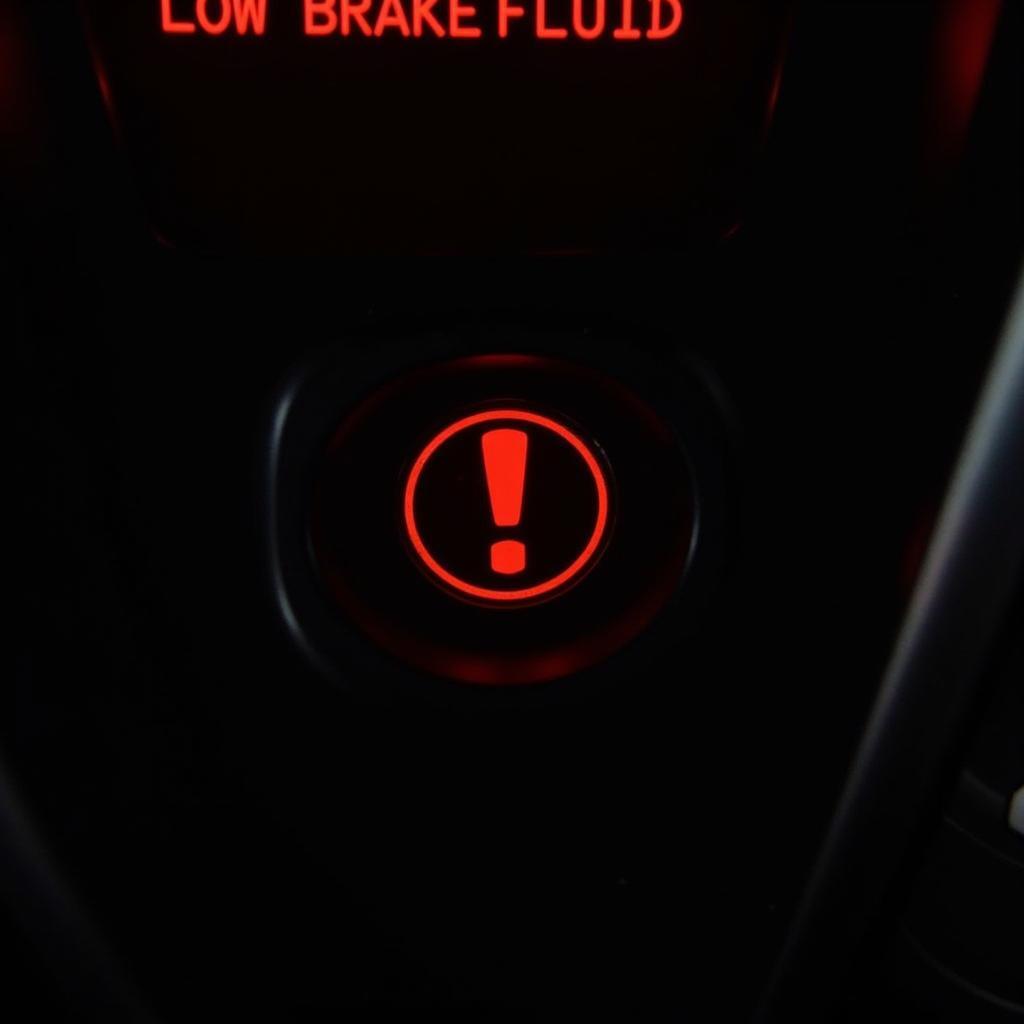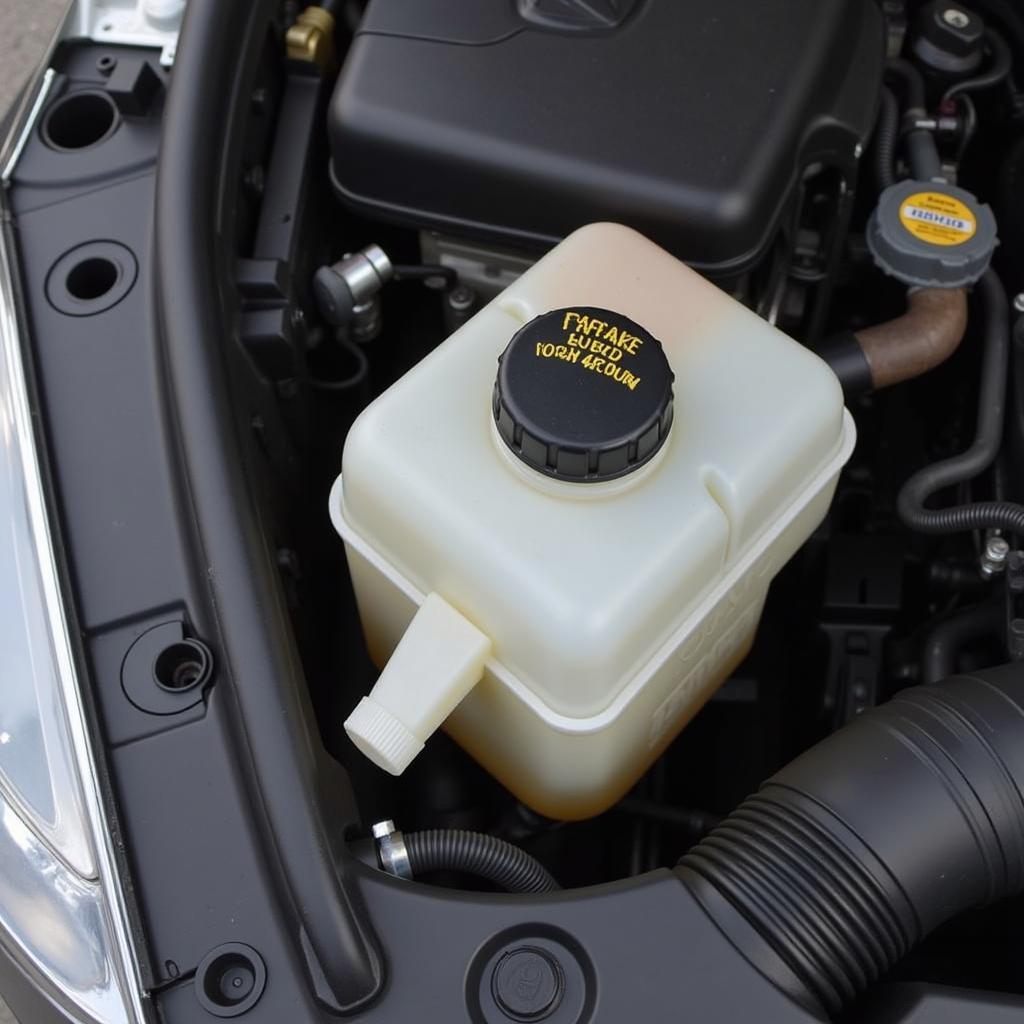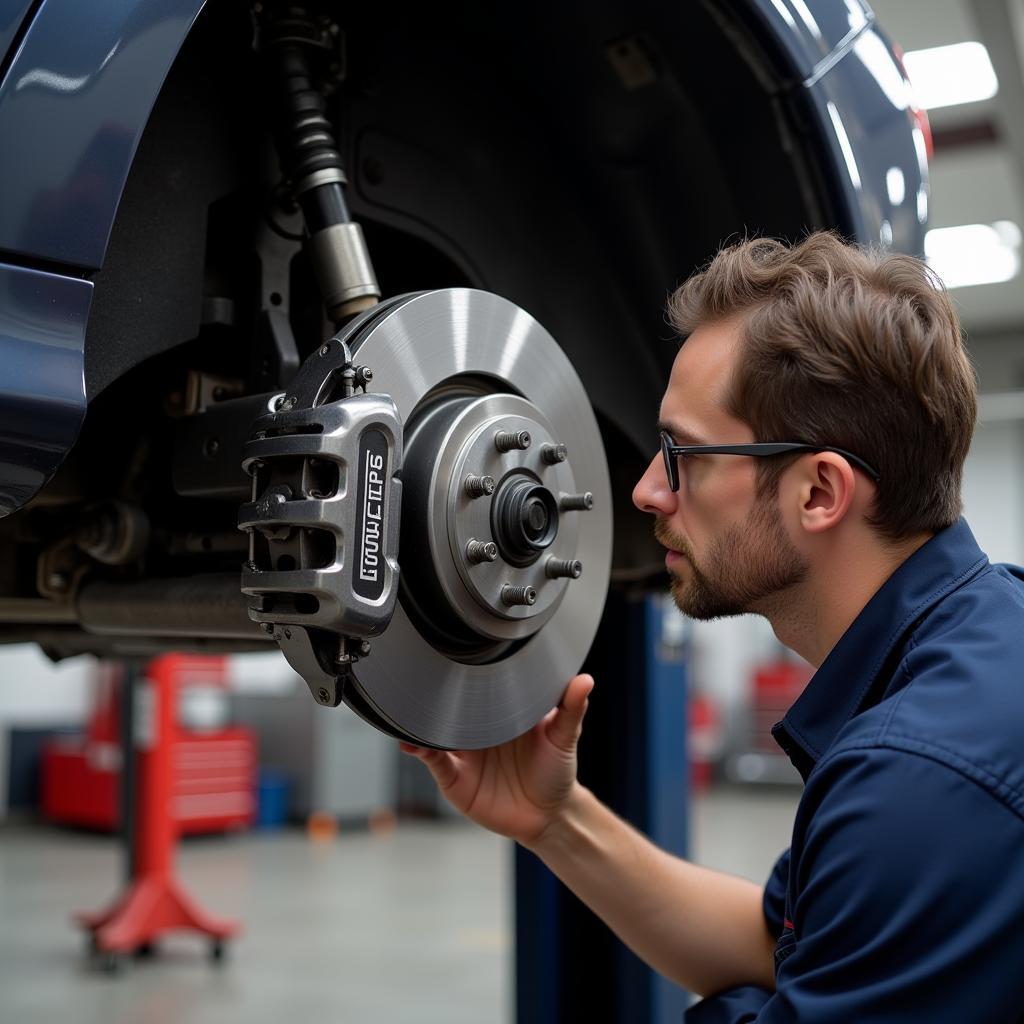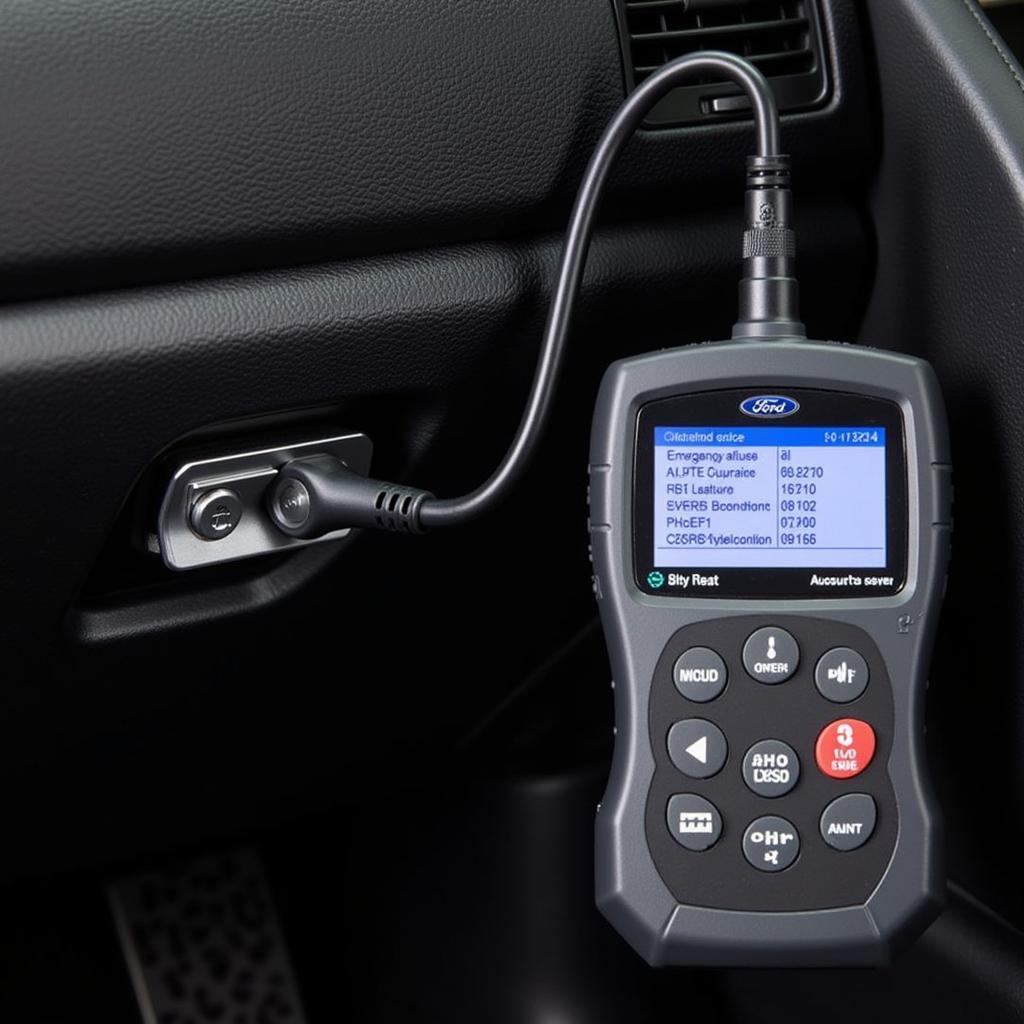If you’re driving your Volvo S40 and a “Low Brake Fluid” warning pops up on your dashboard, it’s crucial to address it immediately. This warning indicates a potential issue with your braking system that requires your attention. Ignoring this warning could compromise your safety and lead to costly repairs.
 Volvo S40 Low Brake Fluid Warning Light
Volvo S40 Low Brake Fluid Warning Light
Understanding Your Volvo S40’s Brake System
Your Volvo S40’s braking system is hydraulic, meaning it relies on brake fluid to transmit force when you press the brake pedal. Over time, brake fluid can deteriorate, become contaminated, or leak, leading to the “Low Brake Fluid” warning.
Common Causes of Low Brake Fluid in a Volvo S40
Several factors can contribute to low brake fluid in a Volvo S40:
- Worn Brake Pads: As your brake pads wear down, the brake calipers need to extend further to engage the rotors. This extension requires more brake fluid, potentially leading to a low fluid level.
- Brake Fluid Leak: Leaks can occur in various components of the braking system, such as brake lines, hoses, calipers, or the master cylinder.
- Internal Leak: While less common, internal leaks within the master cylinder or ABS module can also lead to low brake fluid.
 Volvo S40 Brake Fluid Reservoir
Volvo S40 Brake Fluid Reservoir
Diagnosing the Issue
If you’re comfortable working on your car, you can perform a preliminary check:
-
Check the Brake Fluid Level: Locate the brake fluid reservoir under the hood (refer to your owner’s manual for its exact location). The reservoir will have a “Min” and “Max” marking. If the fluid level is below the “Min” mark, you’re low on brake fluid.
-
Inspect for Leaks: Carefully examine the area around the master cylinder, brake lines, and near the wheels for any signs of fluid leaks. Look for wet spots, drips, or stained areas.
What to Do When You See the Warning
If you notice a leak or suspect a serious issue:
- Do Not Drive Your Car: Driving with a compromised braking system is extremely dangerous.
- Contact a Qualified Mechanic Immediately: Towing your car to a trusted mechanic is the safest course of action.
If the fluid level is slightly low and you don’t see any leaks:
- Add the Correct Brake Fluid: Consult your owner’s manual for the recommended brake fluid type for your Volvo S40.
- Monitor the Situation: Keep a close eye on the brake fluid level over the next few days. If it drops again, it indicates a leak, and you’ll need to seek professional help.
The Importance of Professional Diagnosis
Even if you can temporarily resolve the issue by adding brake fluid, it’s crucial to have a professional mechanic thoroughly inspect your braking system. They can:
- Pinpoint the Exact Cause: Professionals have the tools and expertise to identify the root cause of the low brake fluid, whether it’s worn brake pads, external leaks, or internal issues.
- Perform Necessary Repairs: From replacing brake pads and lines to addressing leaks or rebuilding components, a qualified mechanic can ensure your braking system is restored to its optimal working condition.
 Volvo S40 Brake Inspection
Volvo S40 Brake Inspection
Preventing Future Issues
Regular maintenance is key to preventing brake problems:
- Regular Brake Inspections: Have your brakes inspected at least once a year or as recommended in your Volvo S40’s maintenance schedule.
- Timely Brake Pad Replacement: Don’t wait for your brake pads to wear down completely. Replace them as soon as they reach the recommended thickness.
- Brake Fluid Flush: Over time, brake fluid absorbs moisture, reducing its effectiveness. It’s essential to have your brake fluid flushed and replaced according to your car manufacturer’s recommendations.
Addressing the “Volvo S40 Low Brake Fluid Warning”
A “Volvo S40 Low Brake Fluid Warning” should never be ignored. By understanding the potential causes, knowing how to diagnose the issue, and seeking timely professional help, you can ensure your Volvo S40’s braking system remains in optimal condition, keeping you safe on the road.

